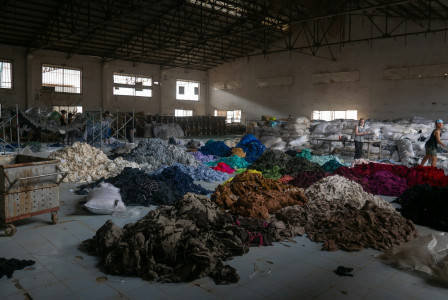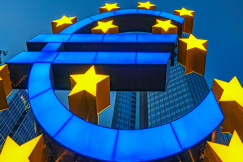Library and support resources
14 May 2025
The EU’s vision for sustainable fashion: transforming the textiles sector by 2030
Library and support resources
14 May 2025
Ecosystem's readiness to support EU strategic autonomy and defence efforts
Infrastructure
Investments and funding
+29 more
Login / create an account to be able to react
-
188

The EU’s sustainable fashion strategy aims to make textiles more durable, repairable, and recyclable by 2030, introducing new design rules and a Digital Product Passport to support circularity and reduce waste.
Topics
Albania
Armenia
Austria
Belgium
Bosnia and Herzegovina
Bulgaria
Croatia
Cyprus
Czechia
Denmark
Estonia
EU-27
Finland
France
Georgia
Germany
Greece
Hungary
Iceland
Ireland
Italy
Kosovo
Latvia
Liechtenstein
Lithuania
Luxembourg
Malta
Moldova
Montenegro
Netherlands
North Macedonia
Norway
Poland
Portugal
Romania
Serbia
Slovakia
Slovenia
Spain
Sweden
Switzerland
Türkiye
Ukraine
Academic / Research and VET Institutions
Business Support Organisation
Company with 250 or more employees
Cluster Organisations
Consumer Organisations
Cultural and Heritage Organisations
Destination Management & Marketing Organisations
EU Institutions
Financial Institutions and Investors
Industry Associations and Chambers of Commerce
International Organisations
Local Authorities
Media / Journalist Organisations
National authorities
Networks and Federations / Confederations
NGOs / Non-profits
Notified Bodies
Regional Authorities
SMEs (a company with less than 250 employees)
Social Economy Entity
Trade Unions
Other
-
Transition Pathway's building blocks
-
-
Ecosystem's readiness to support EU strategic autonomy and defence efforts
-
Infrastructure
-
Investments and funding
-
R&I, techniques and technological solutions
-
Skills
-
Social dimension
-
Sustainable competitiveness
-
Regulation and public governance
-
-
Industrial ecosystems
-
-
Aerospace and defence
-
Agri-food
-
Construction
-
Cultural and creative industries
-
Digital
-
Energy intensive industries
-
Energy-renewables
-
Health
-
Mobility, transport, automotive
-
Proximity and social economy
-
Retail
-
Textile
-
Tourism
-
-
Textiles ecosystem areas
-
-
Fibres, yarns and fabrics
-
Apparel and clothing accessories
-
Household/interior textiles
-
Technical textiles
-
Leather and fur
-
Footwear
-
Research and Innovation
-
Technology and Machinery
-
Waste management, reuse and repair
-
Business support and Communication
-
Not area specific (interested in more than one of the above)
-
Share
The European Commission’s initiative, as detailed in the article ‘How is the EU making fashion sustainable?’, outlines a comprehensive strategy to revolutionise the textile industry. The goal is to establish a sustainable ecosystem for textiles by 2030, focusing on durability, repairability, and recyclability of textiles products. This approach addresses the environmental challenges posed by the current linear model of textile production and consumption.
The strategy emphasises the importance of design in determining a product’s environmental footprint, with plans to set new design requirements for textiles. These requirements aim to ensure that textiles products are long-lasting, easier to repair, and incorporate minimum recycled content. Additionally, the EU plans to introduce a Digital Product Passport to provide consumers with clear information on environmental factors related to textiles.
Key takeaways
- Implementation of new design requirements to enhance the longevity and recyclability of textiles products.
- Introduction of a Digital Product Passport to inform consumers about the environmental aspects of textiles.
- Measures to discourage the destruction of unsold textiles and restrict the export of textile waste.
- Strategies to tackle microplastic pollution originating from synthetic textiles.
This initiative represents a significant step towards a more sustainable and circular textiles industry in the EU.
Learn more about the EU’s sustainable fashion strategy here.
Comments (0)
See also
Small mid‑caps: bridging the gap between SMEs and large companies
- Categories
- Infrastructure Investments and funding R&I, techniques and technological solutions +28 more
Transition Pathway for a resilient, sustainable, and digital textiles ecosystem
- Categories
- Infrastructure Investments and funding R&I, techniques and technological solutions +28 more
Welcome to the Skills and Talent Community Workspace!
- Categories
- Infrastructure Investments and funding R&I, techniques and technological solutions +28 more




